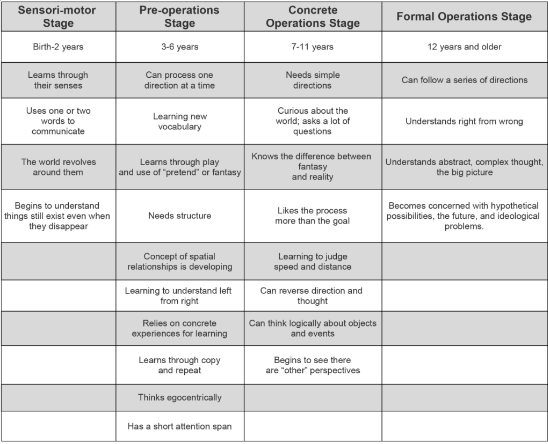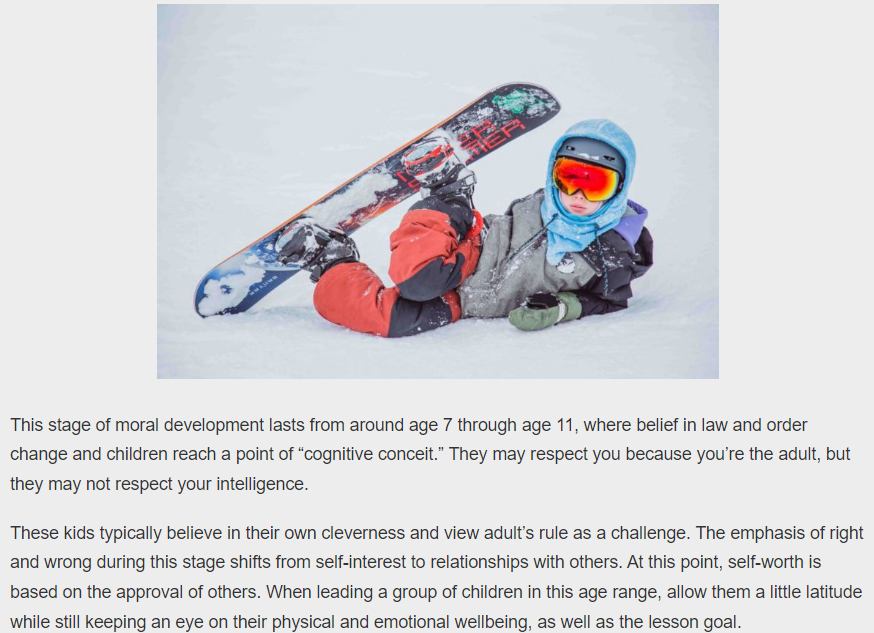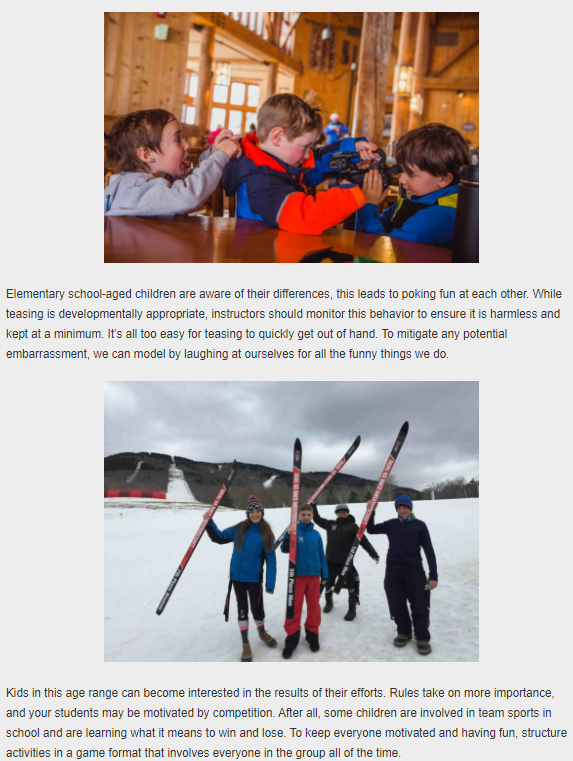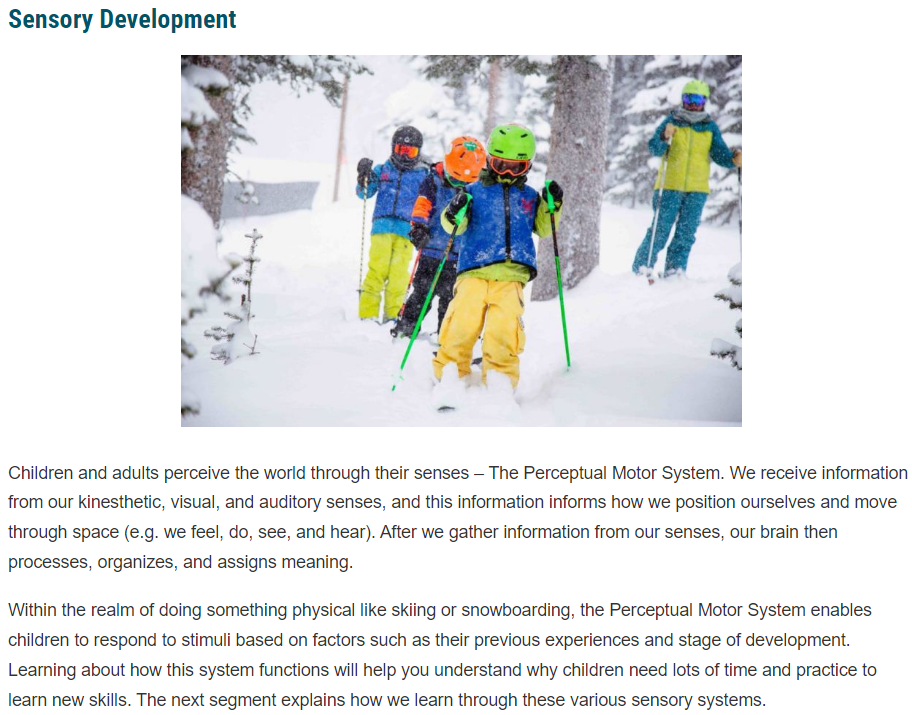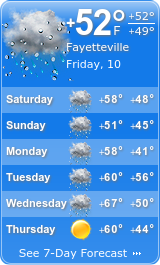Introduction to Working with Children
Then and Now
•Children’s lessons make up more than 75 percent of all lessons. It’s no wonder that so many members have dedicated their time to improve the quality of these lessons. Here is a brief history of the work done by PSIA-AASI’s committees and task forces over the past 4 decades. Click on the boxes below in the timeline for more detail.
Overview of Course
•Knowing more about children’s development and learning patterns will help you create meaningful and memorable experiences with all of your students.
•The CAP Model proposes every human has three “domains” of development: cognitive, affective, and psychomotor or physical, which you’ll explore more in the next module.
•Short video clips, still images, and written descriptions show you the theories behind leading a successful children’s lesson. Throughout the course, you will be presented with quizzes to test your knowledge of the subject learned.
The CAP Model
•Within any given day of teaching, instructors can have an array of students ranging in age from 2 or 3 years old and all the way up. Presenting complex concepts to young children will likely end in boredom, so it’s important to read your class and approach each student differently. Children of this age benefit from activity and structure. Spending more time moving and less time explaining will yield benefits for the student and the instructor.
•When determining a child’s ability and potential for learning, we rely on the information provided in the CAP Model. The CAP Model is a guideline that describes how children think (cognitive), how children feel (affective), and how children move (psychomotor).
This information will help you guide the learning experience and enhance the Learning Partnership for your students. As an instructor, it’s your job to see the world from the child’s perspective and recognize and acknowledge how their perspective changes as they develop and grow. This next topic looks at the first area of development, the cognitive domain.
Cognitive Development
•Cognitive development involves an individual’s ability to receive and process information obtained through experience. Much of our understanding of cognitive development is based on the work of Swiss child psychologist Jean Piaget. Piaget theorized that there are four stages of growth, and believed that a child’s stage of development informs how they experience and interpret the world around them.
•Understanding these four stages will help us make sound decisions, have realistic expectations, and set reasonable goals for our students. Take a look at Piaget’s Stages of Cognitive Development in the table below. Can you think of a time where your student’s stage of development influenced your decision making?
Piaget’s Stages of Cognitive Development
Examples of Cognitive Development Sensori-motor Stage (birth – 2 years)
Pre-operations Stage (3-6 years)
Concrete Operations Stage (7-11 years)
Formal Operations (12 years and older)
Multiple Intelligences
•Harvard University American psychologist and professor, Howard Gardner, developed his theory of Multiple Intelligences on the observation that people have many ways of processing information, ways that are independent of each other. The basis of the theory is in direct opposition to standardized IQ tests, that only measured intelligence in two arenas, verbal-linguistics and mathematical capabilities.
•Gardner describes human cognitive competence in terms of a set of abilities, talents, or mental skills (intelligence). These can emerge as early as 3 years of age, stemming from our biological makeup, experiences, and cultural surroundings. The Multiple Intelligences theory proposes that intelligence has much to do with our potential and the capacity for solving problems, rather than the mode of sensory input. For example, it’s possible for a blind person to have spatial intelligence.
•Are multiple intelligences the same as learning styles? Not really, but there is a relationship between the two. Gardner states that it doesn’t matter what sense is used to absorb information. What matters is how the brain processes that information. Learning styles, or preferences, are associated with the input of information. The connection between the two is that your lessons are more effective if you present information in a variety of ways. Matching the presentation to the natural tendency of the students, they are more likely to retain what you teach when more parts of their brain are active.
•Gardner groups human capabilities into eight comprehensive categories. (More have been added, but we just cover the original eight.) As you review these categories, think of what you would do to tailor your message towards each intelligence listed. For example, for musical intelligence, you can use a song’s beat or rhythm to help enhance turn shape.
Linguistic: Verbal – Linguistic Intelligence or word-smart
Logical: Logical – Mathematical Intelligence or number and logic smart
Musical: Musical Intelligence or music smart
Spatial: Visual – Spatial Intelligence or picture smart
Kinesthetic: Bodily – Kinesthetic or body and movement smart
Interpersonal: Interpersonal Intelligence or people smart
Intrapersonal: Intrapersonal Intelligence or self smart
Naturalist: Naturalist Intelligence or nature smart
Summary
•Children participate in snowsports lessons for all kinds of reasons. Our job is to understand our students to create a fun and successful learning experiences. Knowing how they reason and process information, how they view themselves in the world and what interests them, and how to provide an environment in which they thrive, is the foundation of a great lesson.
Affective Development
•Affective, or social and emotional, development relates to how children feel about themselves and how they interact with others. Like cognitive development, children’s social and emotional stage affects their behaviors, shapes their attitudes, and influences their motivations. Some aspects of affective development are easy to observe while others are hidden. At the beginning of a lesson, students can show fear, excitement, anxiety, anticipation, apathy, or confidence. The list is endless, and oftentimes many feelings are shown at the same time or not at all.
•How do you recognize fear in a 4-year-old? When a young child complains of a tummy ache is it their tummy, or do they miss their mother? How do you approach a middle schooler who is overly confident? What can you do for a teenager who is disinterested because they’d prefer to be inside FaceTiming friends? These are difficult questions to answer, but understanding how students think and feel about themselves and the world around them will enhance your effectiveness as an instructor.
•The next couple of topics will address a few of the key principles that guide our decision-making with students. And as a reminder, the Teaching Children Snowsports Manual, Children’s Teaching Handbook and Teaching Snowsports Manual provide more information on these topics.
Kohlberg’s Theory of Moral Development
•The development of moral reasoning shapes how children view themselves and how they view others. Why is this information relevant? Understanding what influences your student’s behaviors can help inform your interactions with them.
•To understand children’s moral behavior, it’s helpful to consider how children view right and wrong. American psychologist and Harvard professor Lawrence Kohlberg constructed a model to address moral development asserting that children go through stages, similar to the stages of cognitive development. Their evolving sense of right and wrong affects how they conduct themselves and how they treat others.
•Kohlberg identified three main stages with sub-stages in between, totaling six stages. The teams that developed children’s specific education materials to use when teaching snowsports consolidated these six stages into four categories. The main point of Kohlberg’s stages is that children pass through them in a specific order, much like Piaget’s stages of cognitive development. Also similar to Piaget’s theory, not everyone reaches the highest level of moral reasoning.
Good is Good; Bad is Bad
Clever as a Fox
All in Favor Say Aye
Listen to Your Conscience
Maslow’s Needs
•Making sure that you meet a child’s emotional needs is crucial to the learning process. The effect of the social/emotional environment can enhance children’s positive feelings about themselves and can inspire them.
•Motivation is an urge which causes us to act or perform. –Abraham Maslow
•In his original theory first proposed in 1943, Maslow’s describes these categories of needs – Physiological, Safety and Security, Love and Belonging and Self-Esteem. If all of a person’s Physiological needs were met then one could move on to meeting their Safety and Security needs. And, if all needs were met, in order of these four categories, then a person would reach their individual potential and be self-actualized. In other words, these categories of needs were hierarchical in nature. This is why you may have seen Maslow’s theory in older manuals represented in a pyramid fashion and described as Maslow’s Hierarchy of Needs.
•Since Maslow proposed his theory, psychologists and educators and others (including snowsports professionals) have critiqued, refined and amended his theory to reflect what they have observed in human behavior over the years. The findings show that, even in the absence of attaining some of the needs, people may still manage to achieve their potential and become self-actualized. Consequently, the current interpretation of Maslow’s theory is an interactive rather than a hierarchical one with each of the four categories contributing to the self-actualization of a person.
•The Maslow’s Needs diagram, updated for the 21st century Snow Pro reflects how each of the categories can contribute to a great lesson experience for your student. As a snowsports instructor, knowing these four categories of needs and addressing these needs, allows you to create a great lesson experience. What children do to give you clues about their needs, and what you do to meet the children’s needs often varies depending on their stage of cognitive, affective, and physical development.
Understanding Maslow’s Theory of Needs is crucial to know how to support your students so that they are motivated to learn.
Physiological Needs
Safety Needs
Separation Anxiety
•For very young children, being in a different environment, with different people doing different things can be unsettling to absolutely terrifying, resulting in what is called “Separation Anxiety.” Most instructors have at least witnessed a young child’s “breakdown,” which sometimes looks like a tantrum. Understanding that this is real for these kids is step #1. Knowing how to help these children transition from the safety network of parent or guardian is step #2. More information is given on how to manage this situation in Module 4.
Belonging & Love Needs
Self-Esteem Needs
Humor, Play, Rules, and Competition
Ages 2-3
Ages 3-7
Ages 7-12
Ages 13-18
Affective Summary
•Affective development is related to how children interact with others, how they react and how they feel. How you approach your students has a profound effect on the success of the lesson. Understanding the inner workings of young minds will shed light on the student standing in front of you.
Physical Development Part 1
•Children’s physical development explains why and how children move the way they do. There are noticeably different ways that kids ski and ride from adults. We often refer to these differences in how one actually skis or rides, to how we are teaching them to ski or ride, as “real” and “ideal.”
•Let’s explore some of the fundamental aspects of physical growth and movement development that contribute to how children really ski and ride.
Development of Strength
Development of Coordination
Center of Mass
•The location of a young child’s center of mass (CM) is slightly higher in the torso than an adult’s because their head is proportionally larger in relation to their body. Due to this and the fact that a child’s body shape differs from an adult’s, children maneuver themselves into balanced positions that don’t work for adults. Regardless of where the CM is precisely located, a balanced stance is one where it is centered over their Base of Support (BOS).
•The “real” or how the child is effectively moving does not equal the “ideal” or how an adult would move. Children do grow up, so it’s important that you coach mature movements. The earlier they learn proper posture, body alignment, and body awareness, the more ingrained it will become.
Physical Development Part 2
Kinesthetic Development
Visual Development
Auditory Development
How Children Learn Motor Skills
Physical Summary
•As you’ve learned from these last two sections, the physical development of children is a long and layered process. You’ve learned that children really do have bodies that differ from adults. You’ve also learned that all of their senses are constantly working to detect information about their environment, enabling them to maneuver effectively within the winter playground.
•As a children’s instructor, you have the opportunity to introduce your students to the wonderful world of winter in ways that they can understand, appreciate, and enjoy.







